Email Engagement
Exploring 11 Different Types of Email Marketing Campaigns for Ecommerce
minute read
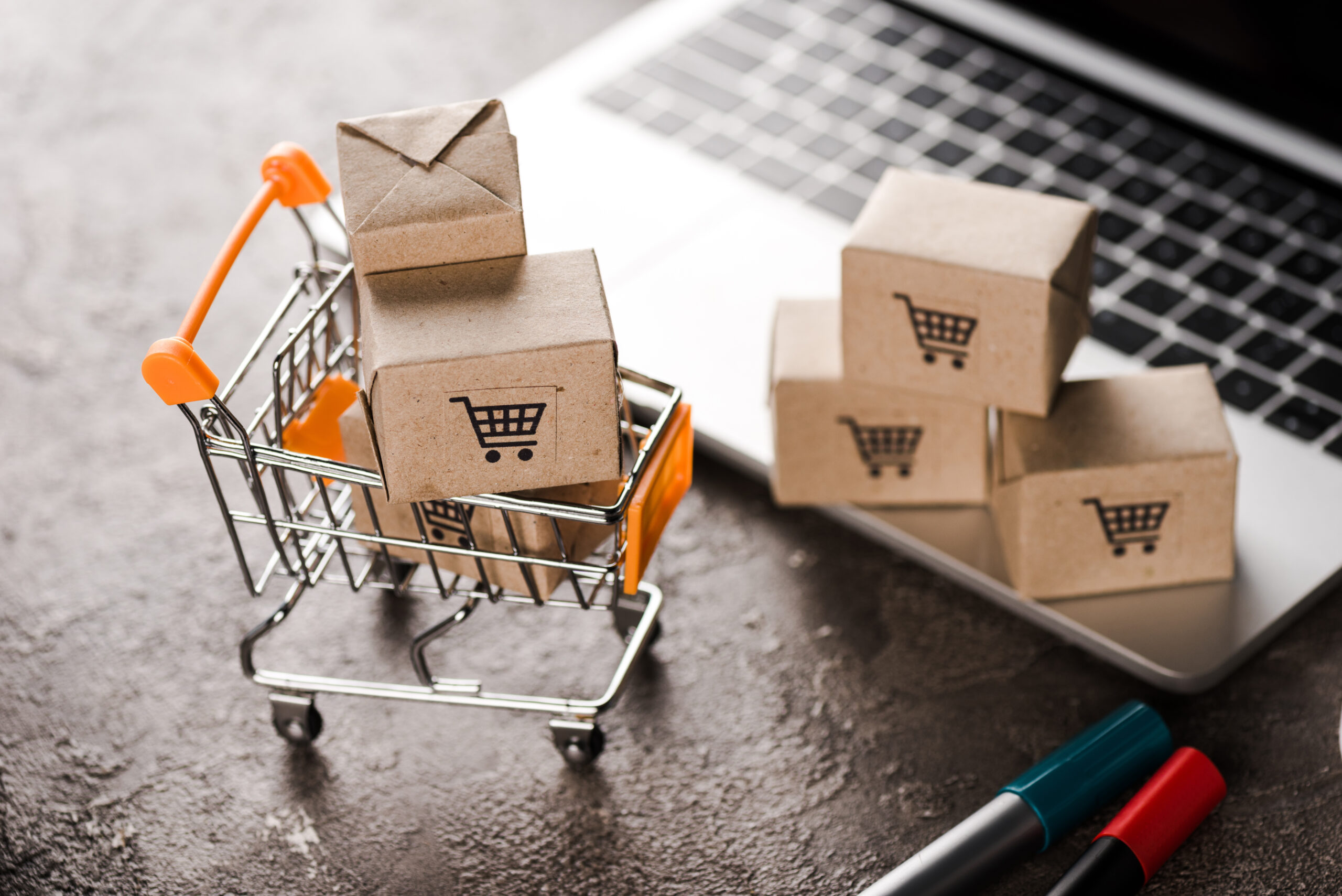
When it comes to ecommerce, competition is fierce and consumer attention spans are fleeting.
In this environment, email marketing is a beacon of hope for businesses aiming to connect with their customers more personally and effectively. Unlike other forms of digital marketing, email offers a unique blend of direct communication and personalization, making it an invaluable tool for businesses of all sizes.
Below, we’ll delve deeper into the different types of email marketing campaigns (including what makes them particularly effective in ecommerce), explore innovative strategies, and share real-life email examples to inspire your email marketing journey.
The power of personalized communication
At its core, email marketing is about building relationships. It enables brands to communicate directly with customers and bypasses the noise of social media and other crowded platforms.
This direct line of communication is crucial in an era where consumers are bombarded with countless marketing messages daily. Emails provide a quiet space for brands to converse with their customers, share their stories, and, more importantly, listen to their customers’ needs and preferences.
Driving engagement and conversion
The impact of email marketing in driving customer engagement and conversion is well-documented. Email marketing remains one of the most effective marketing channels, often outperforming others in return on investment (ROI). For ecommerce businesses, well-crafted email campaigns lead to increased sales, repeat purchases, and stronger customer loyalty. Additionally, the ability to track and analyze customer interactions with emails provides invaluable insights, helping businesses refine their strategies for maximum impact.
The role of data in strategy development
As every good marketer knows, data is king. Using data-driven insights to tailor email content, timing, and frequency can significantly enhance the effectiveness of your email campaigns. By analyzing customer behavior, purchase history, engagement, and other email marketing metrics, ecommerce marketers can create highly personalized and relevant email content. This is crucial to capturing the customer’s attention and fostering a deeper connection with the brand.
11 types of email marketing campaigns every business should know
The sheer diversity of email marketing campaigns allows for creative and strategic engagement with customers. These campaigns range from welcoming new subscribers to re-engaging those who’ve shown less activity.
Let’s explore the essential types of email campaigns that every ecommerce business should consider incorporating into their marketing arsenal.
Essential email campaigns for ecommerce
The ability to stand out in a crowded inbox isn’t just about catching the eye; it’s about resonating with the customer at a personal level. Essential email campaigns form the backbone of this strategy. They’re not just emails; they’re the starting points of conversations, the building blocks of relationships, and the catalysts for customer journeys.
By leveraging data and insights, these campaigns transform routine communications into personalized experiences and foster a sense of belonging and loyalty among customers. Let’s delve into some examples below.
Welcome emails are the first step in building a relationship with your customers. They set the tone for future communications and offer an opportunity to introduce your brand’s personality and values. A compelling welcome email not only acknowledges a new subscription but also encourages further interaction with your brand, whether it’s through a special offer or a prompt to explore your product range.
Welcome email example: In this example by Headspace, the popular wellness app sets off the relationship with a congratulatory, supportive tone. The email goes on to share a few personalized recommendations before ending with a link to the FAQs and an email to customer support. Overall the approach is straightforward and encouraging without being too pushy.
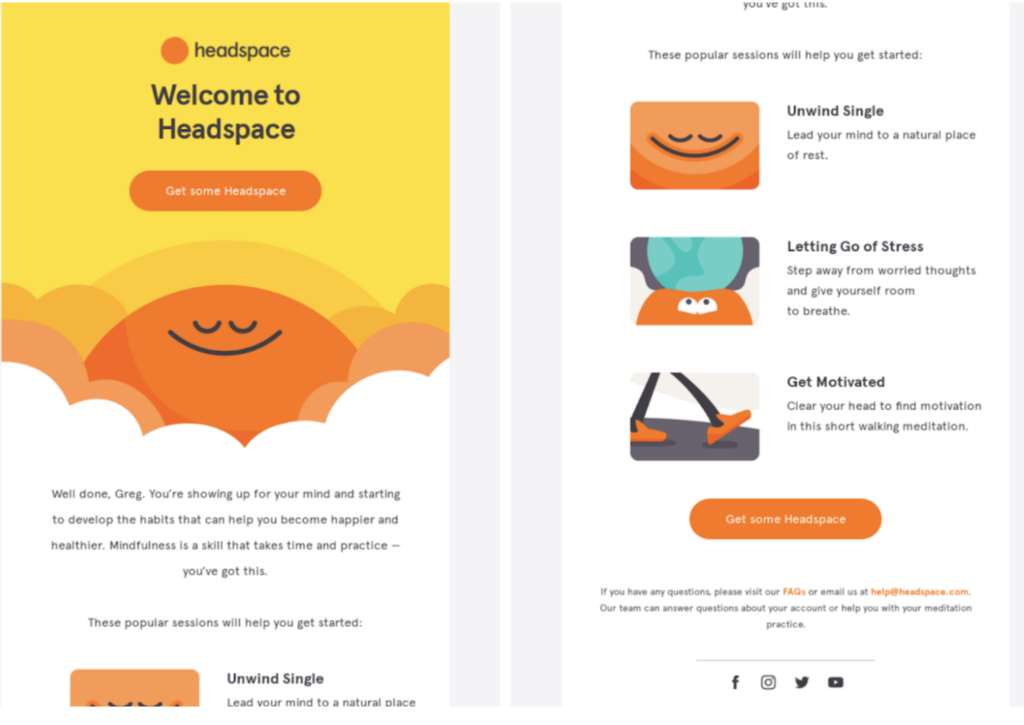
Personalized email campaigns should go beyond simply addressing a customer by their name. These types of email marketing campaigns can also include product recommendations based on browsing history, tailored discounts, or updates on items that align with the customer’s interests. These emails are a chance to really show customers that you understand their needs and preferences while enhancing their shopping experience and fostering loyalty.
Personalized email example: In this example, Air New Zealand takes a recent ticket purchase as an opportunity to upsell. They use descriptive language to set the stage for their island-themed sale and encourage the subscriber to act fast and add to their itinerary at a discounted rate. By tailoring their suggestions (based on one passenger flying out of Christchurch) and selling at a reduced price (not to mention, an opportunity to win loyalty rewards) the offer to buy goes from enticing to a no-brainer.
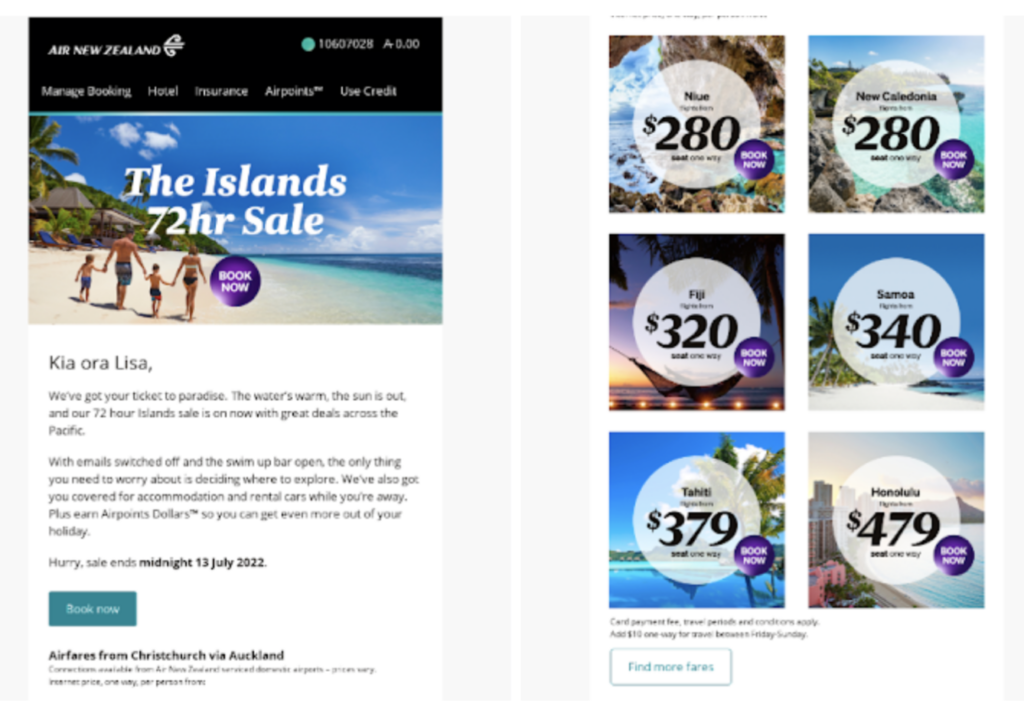
Loyalty and rewards emails help retain customers and encourage repeat purchases. These emails can update customers on their loyalty points, inform them about exclusive member-only deals, and celebrate milestones in their journey with your brand. Such campaigns incentivize further purchases and make customers feel valued and appreciated.
Loyalty email example: Here, Russell Athletic’s email copy is straight and to the point (with just a touch of mystery). A simple announcement email lets subscribers know about the program while a clear CTA button drives subscribers back to their website for more information.
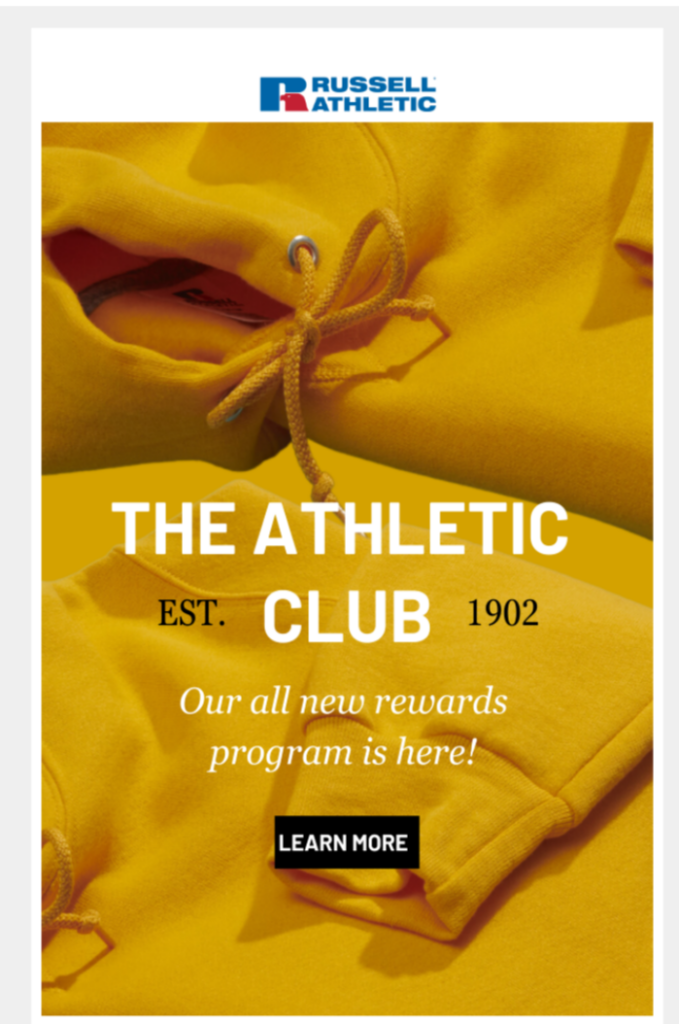
Key email campaigns for keeping subscribers engaged
Engaging email subscribers in the long term is much like nurturing a garden; it requires consistent care, attention, and understanding of what makes each plant – or in this case, each customer—thrive. In an era where customer attention is a prized yet fleeting commodity, keeping email subscribers engaged is both an art and a science.
The following section explores the various types of email campaigns designed to maintain and deepen customer engagement. From drip campaigns that keep the conversation flowing to seasonal campaigns that tap into the collective mood, each email example below serves a unique purpose in keeping the brand relevant and top-of-mind.
Drip campaigns are automated email sequences triggered by specific actions or timelines. For example, if a customer signs up for a newsletter, they might receive a series of emails introducing various aspects of your brand or product offerings. These campaigns are effective in nurturing leads and keeping your brand top-of-mind.
Drip email campaign example: Shopbop’s approach is stretched out over a couple of days (without waiting so long that the sense of urgency is gone). They start by thanking new subscribers with a 15 percent discount before urging them to confirm their subscription via double opt-in. From there, they open up a bit more as a brand, boasting fashion style as their specialty and welcoming new subscribers into the fold. They also hint at a loyalty program, sharing a link to a membership page and urge readers to shop from curated lists as a starting point. As with any good onboarding email, they end with important customer support information.
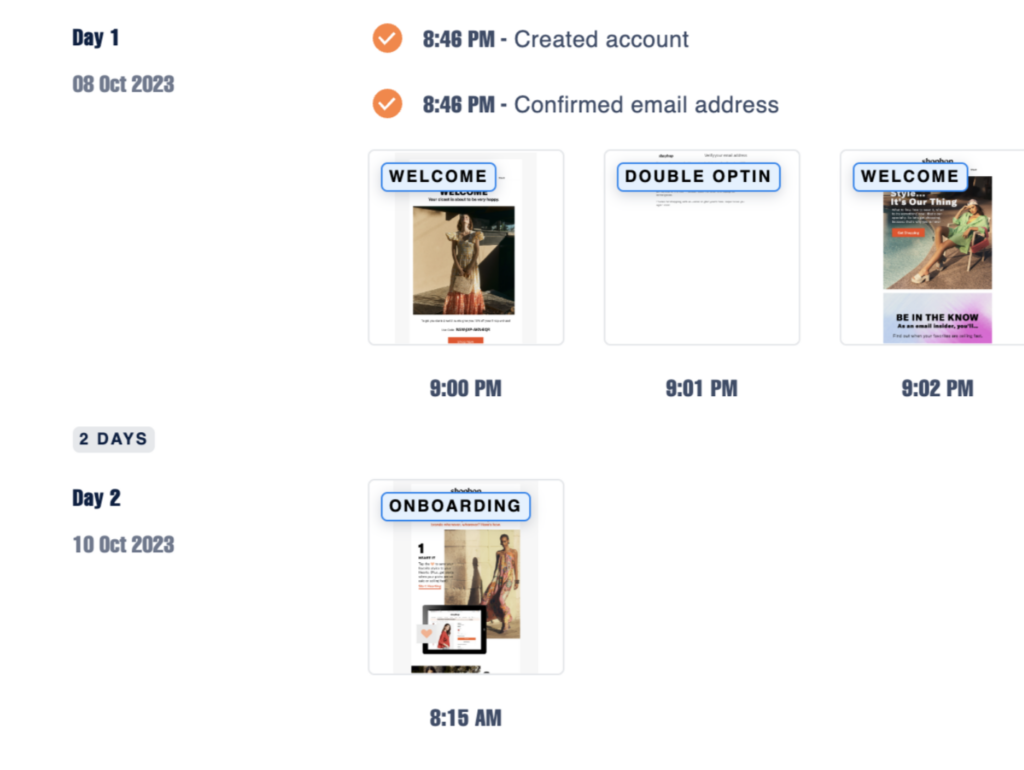
On day two of the email series, Shopbop announces that “shopping just got easier” and shares an actionable checklist for subscribers wanting to browse their favorite styles.
Seasonal campaigns might include special offers, holiday-themed content, or exclusive previews of seasonal products. These campaigns create a sense of urgency and relevance, encouraging customers to engage with your brand during these key periods.
Seasonal email example: Freshly Picked clearly takes the Christmas season seriously! They humanize the brand with a heartwarming holiday picture and well-wishes but keep shopping top-of-mind with consistent CTA buttons. A final CTA to join the waitlist for seasonal grab bags also adds a touch of urgency (and fun).
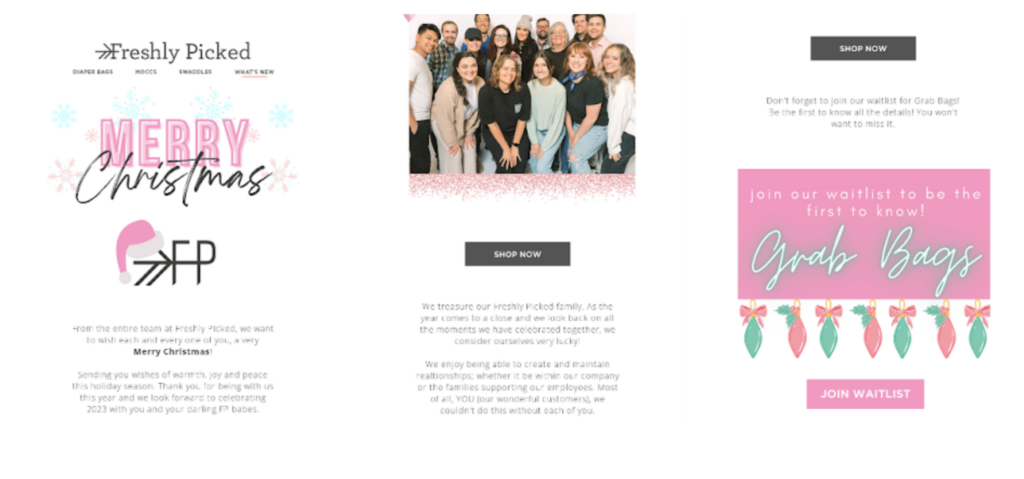
Discount and promotional emails are classic yet powerful ways to drive sales. Whether it’s a flash sale, a limited-time offer, or a clearance event, these emails can quickly grab attention and prompt immediate action. The key is to create a sense of exclusivity and urgency without overwhelming your subscribers with too frequent promotions.
Promotional email example: In this example, 2XU uses visual cues to add a sense of urgency to their email. From the discount rate (20 percent) being front-and-center in large font, to the use of a countdown clock, there’s no confusing the goal of this email. A liberal use of CTA buttons means subscribers can easily engage with a simple tap.
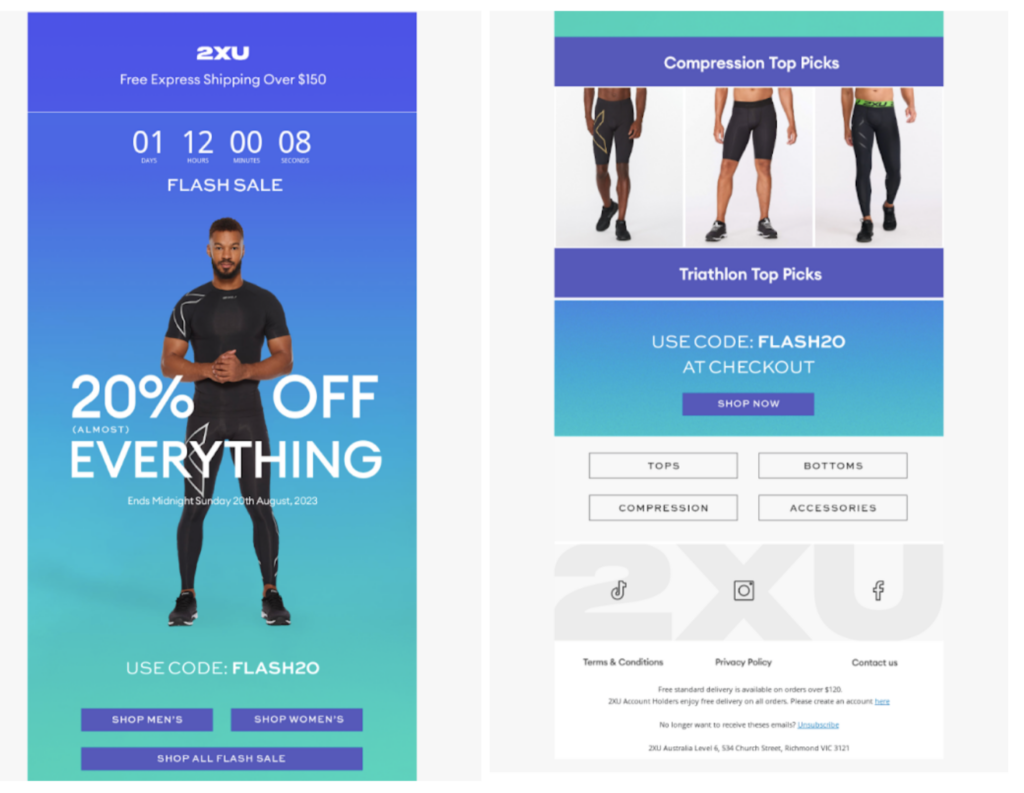
Product review emails can serve multiple purposes. They provide valuable feedback, increase customer engagement, and generate content that can be used to persuade future customers. Furthermore, these emails demonstrate that you value customer opinions and are committed to improving their experience.
Product review email example: Here, Casper keeps it simple and sincere. Their formula consists of thanking subscribers for their purchase, inviting them to share their experience, and rewarding them for doing so with a limited-time offer.
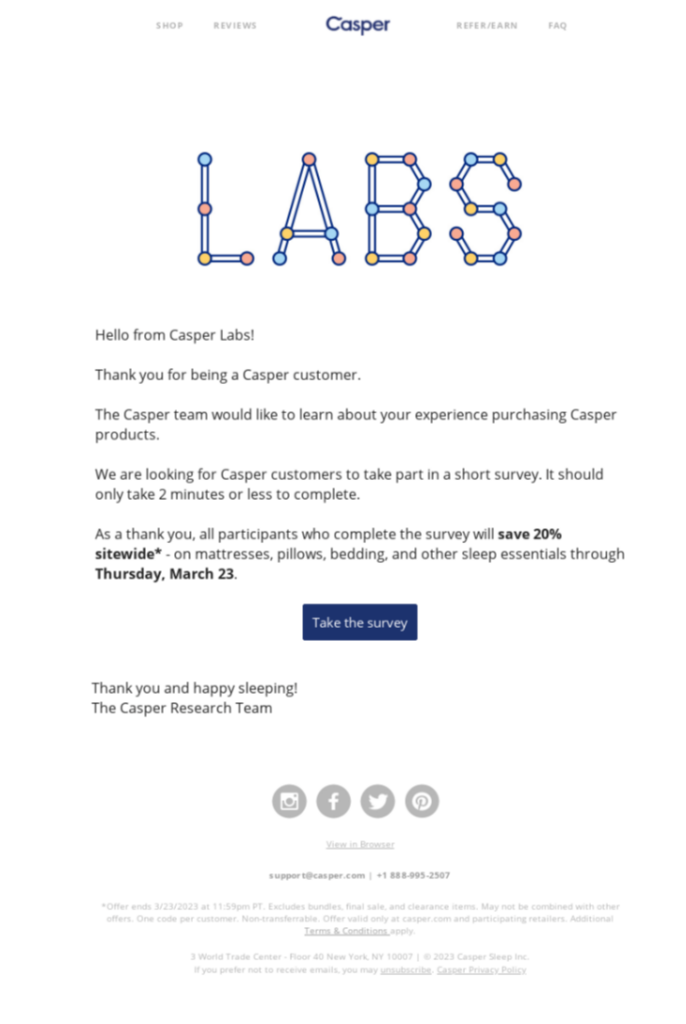
Capturing attention with one-off email campaigns
In ecommerce, where every interaction counts, one-off emails are strategic tools to recapture interest, reignite dormant connections, and celebrate special moments with customers. This section focuses on the power of well-timed, well-crafted one-off emails, from abandoned cart reminders that nudge customers towards completion of a purchase to birthday emails that add a personal touch. Each of these below email types is a strategic play in the grand chessboard of customer engagement, designed to make a meaningful impact at just the right moment.
Abandoned cart emails remind customers of items they’ve left in their shopping carts. These emails can include a persuasive message, a gentle reminder of the product’s benefits, or a limited-time discount to encourage completion of the purchase.
Abandoned cart email example: Volcom uses a conversational tone in their email and uses principles of psychology to encourage subscribers to return to their carts. Their copy is short but effective, quelling any possible doubts the customer may have before offering up a few choice recommendations.
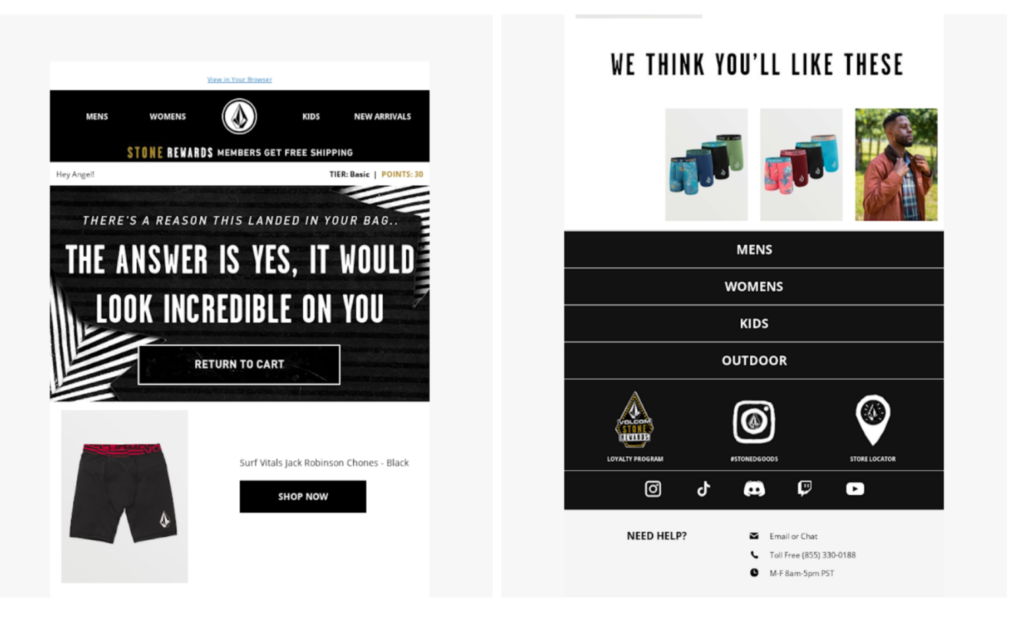
Winback emails: Winback (also known as re-engagement) emails aim to draw back customers who haven’t interacted with your business in a while. These types of emails might include a special welcome-back offer, an update on what’s new with your brand, or a survey to understand why a subscriber has disengaged.
Winback email example: We love this email by Office Depot & Office Max because it leaves room for some middle ground. Their “Coupon please!” option gives readers an immediate incentive whereas their “15-day snooze” option gives the customer time to breathe without having to make any sudden decisions. “Send me less” updates the reader’s settings while “Unsubscribe me” makes one-click-unsubscribe possible.
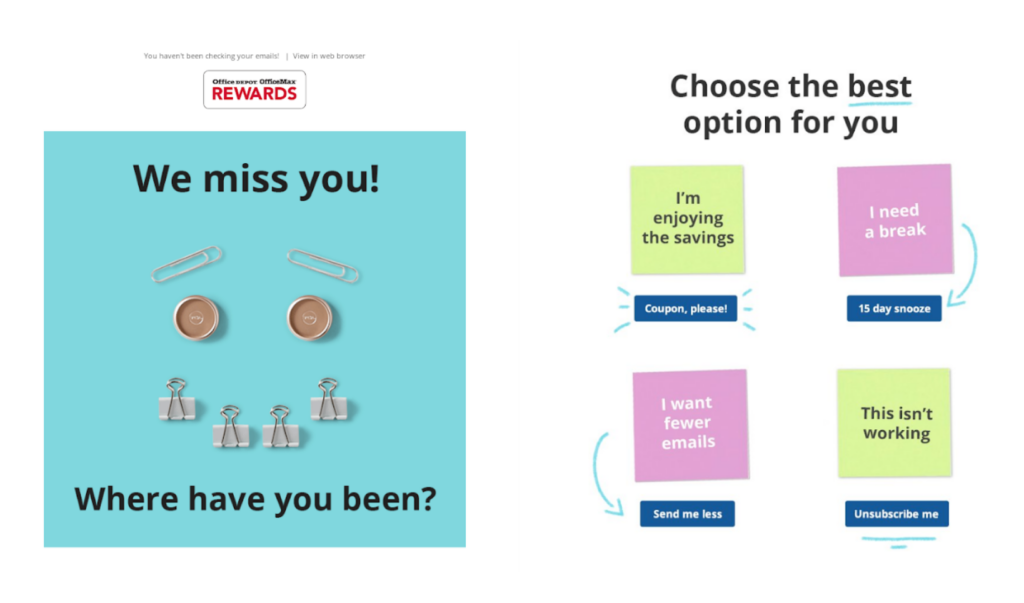
Birthday emails can be a delightful surprise. These emails might offer a special birthday discount, a free gift, or simply convey warm wishes, further contributing to a positive emotional connection with your brand.
Birthday email example: Quiz Clothing UK’s email gets straight to the point with a Happy Birthday and a discount code. Where they take it up a notch is with personalized shopping suggestions they think the reader will like. Nice touch!
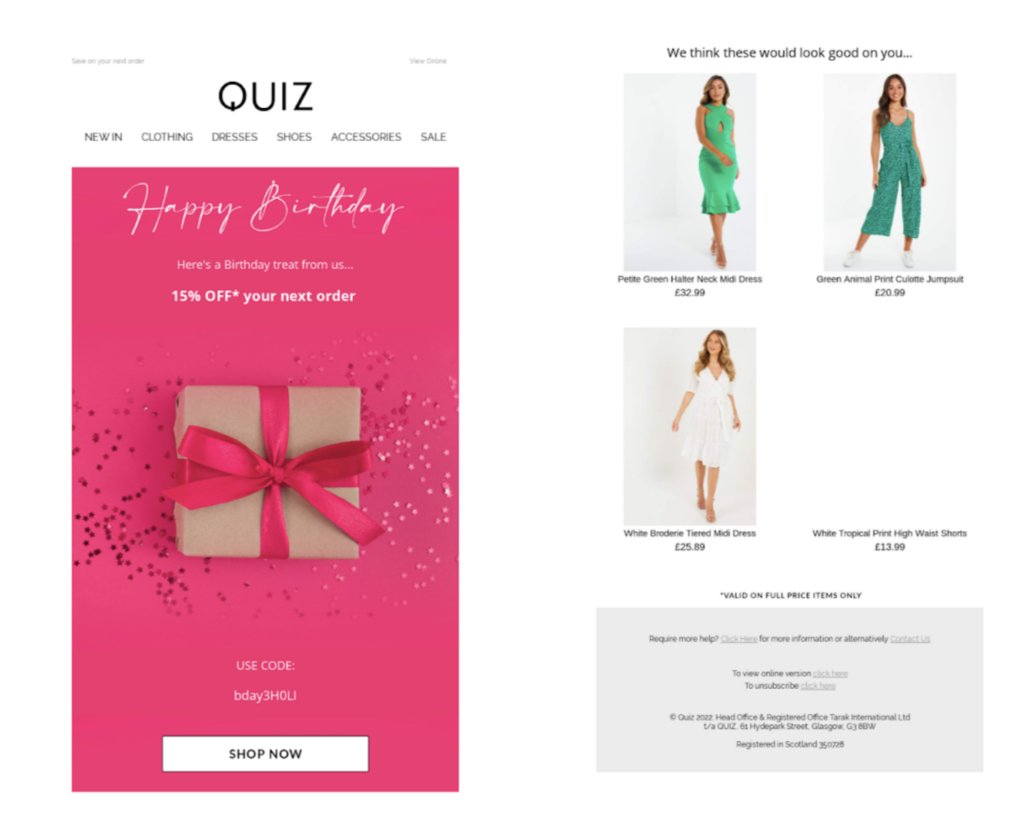
Back-in-stock emails: For customers who showed interest in out-of-stock items, a ‘back in stock’ email can prompt immediate action. This type of email capitalizes on existing interest and can be highly effective in converting interest into a purchase.
Back-in-stock email example: In this email example, REVOLVE also uses visuals to enhance its message. While “Back in Stock” makes a big impression (no pun intended), the aforementioned styles are lined up in clear view. Their copy, “Add these must-have styles to your cart before they’re gone again,” further adds to the urgency.
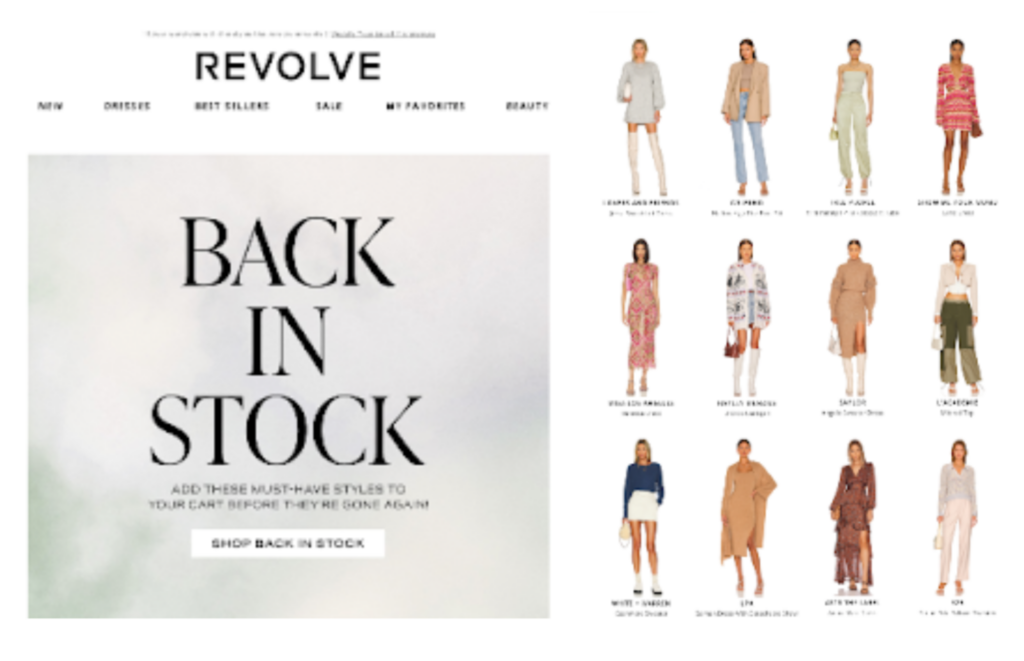
Try Validity MailCharts to explore all email examples
Email marketing campaigns remain a cornerstone of digital marketing for ecommerce because of their ability to foster personal connections, drive engagement, and ultimately boost sales.
By leveraging a mix of different types of email campaigns, ecommerce marketers can effectively cater to the diverse needs and interests of their customers. The key is to remain innovative, data-driven, and customer-focused, continually adapting to the evolving landscape of ecommerce and customer expectations.
Need more inspiration? Browse MailCharts email marketing database to inspire your next campaign.